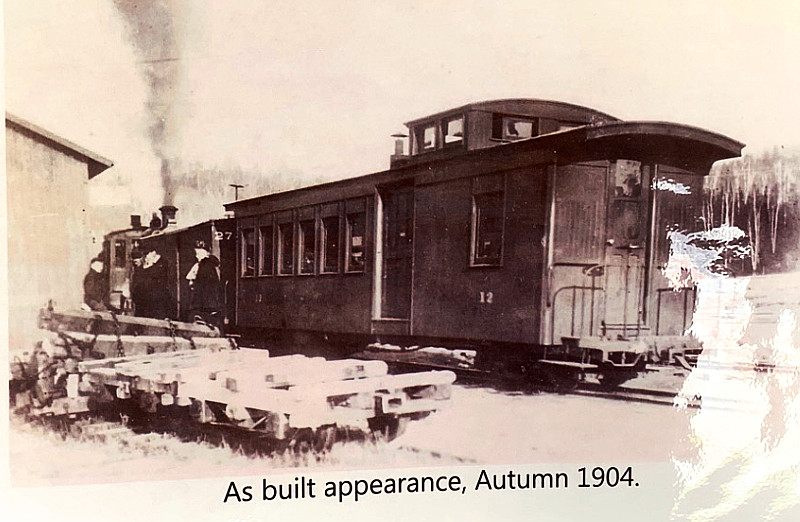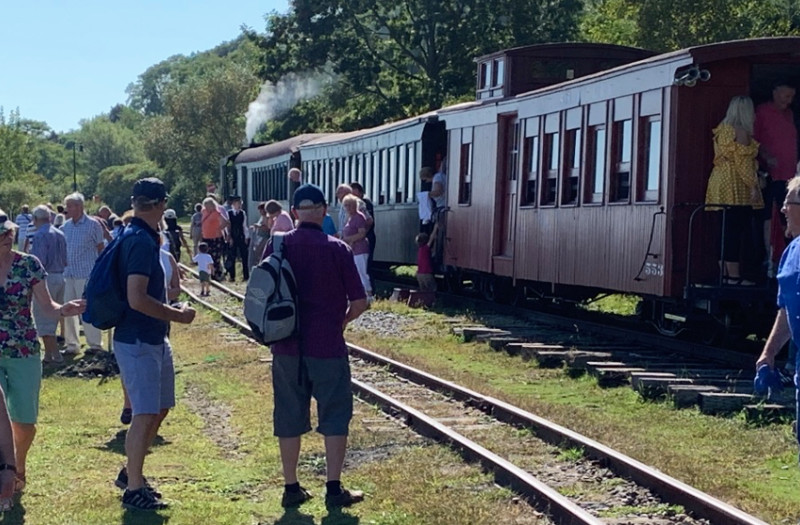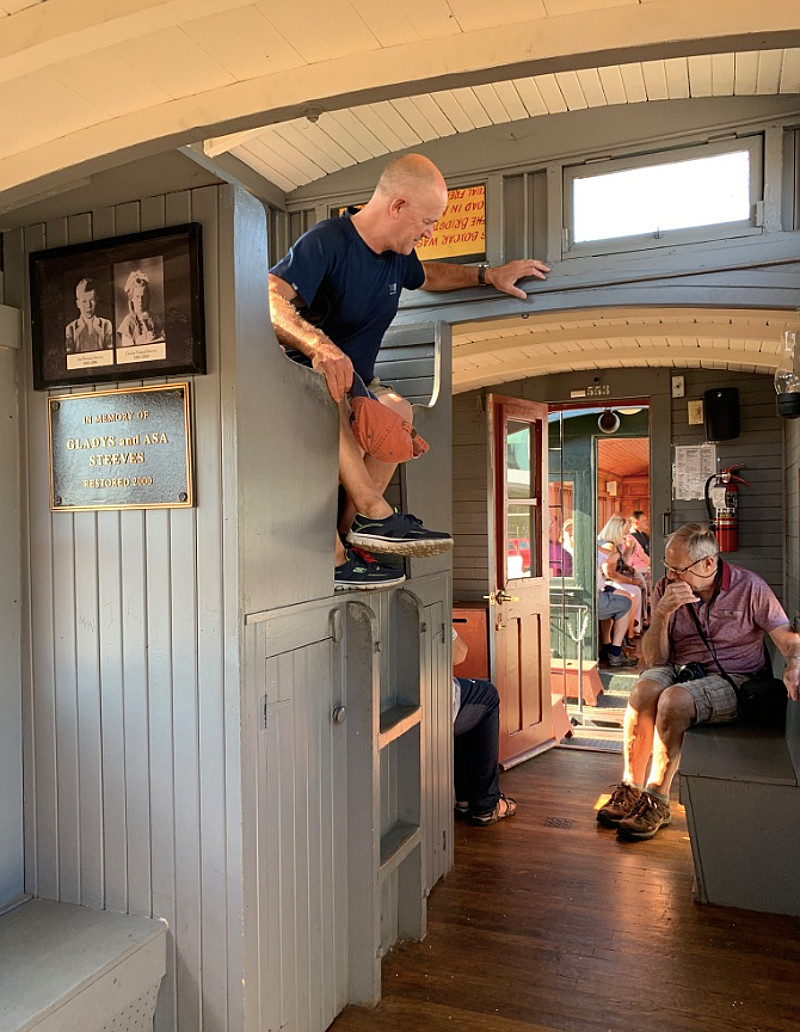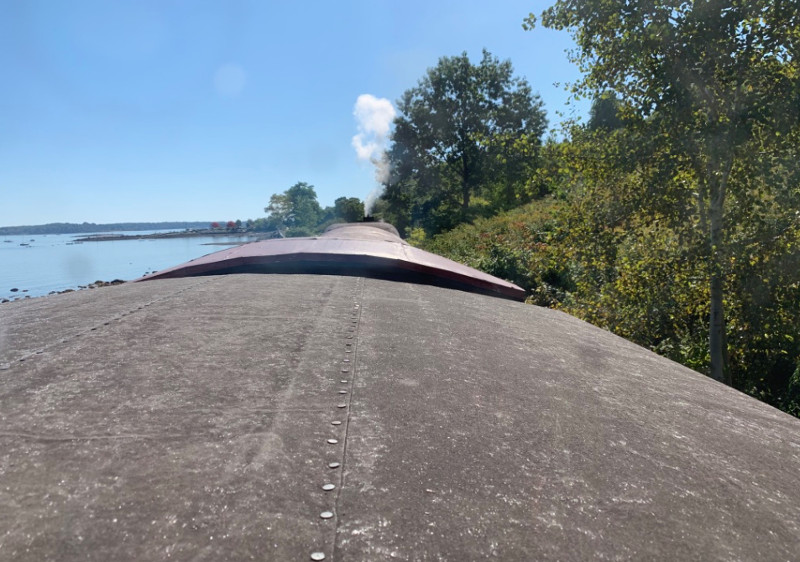The Train Manager or Conductor was formerly the Guard or Brakesman. Looking back into early Victorian railway history, there were no continuos brakes all along a train and the driver of the locomotive had to whistle for brakes to be applied, locomotive brakes alone (even if they were fitted) being inadequate to halt the train. If the train should have become divided, without a through brake pipe the guard / brakesman was all the more important because he was left alone on an otherwise free-rolling collection of carriages and wagons. There were numerous accidents ...
So - how did the brakesman know what was going on along his train from his position at the rear? The
UK▸ 's loading gauge is tight, and narrow lookout window were just about all that could be provided on the side of a brakevan, with a narrowed main body to help the chap see forward. In the USA, with a more genetous loading gauge, the "Caboose" car became the iconic tail vehicle on the train.
On a visit to Portland, Maine last week I had the opportunity to travel a mile or two in a restored narrow gauge caboose of 1904 vintage - no longer with the braking equipment, alas for (I think) the train had continuous breaks - but never the less interesting to see.






